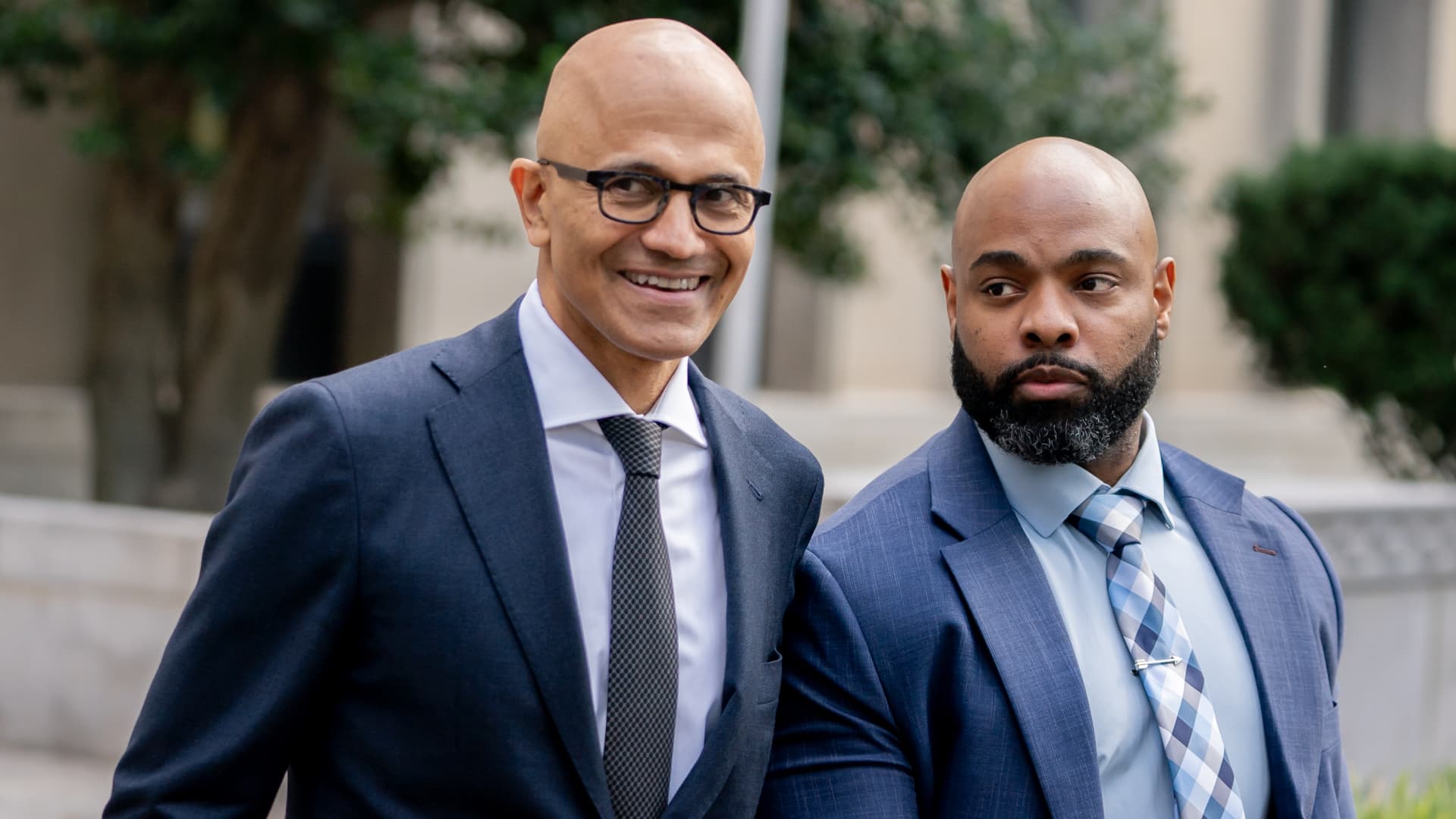Microsoft CEO Satya Nadella, left, departs from federal court in Washington, D.C., on Oct. 2, 2023.
Nathan Howard | Bloomberg | Getty Images
Microsoft shares moved as much as 2% lower in extended trading Tuesday after the software maker issued fiscal second-quarter results that outdid analysts’ estimates and a light quarterly revenue outlook.
Here’s how the company performed, compared with consensus among analysts polled by LSEG, formerly known as Refinitiv:
- Earnings: $2.93 per share, vs. $2.78 per share expected
- Revenue: $62.02 billion, vs. $61.12 billion expected
Microsoft called for fiscal third-quarter revenue between $60 billion and $61 billion, or $60.50 billion at the middle of the range. Analysts polled by LSEG had expected $60.93 billion. But the company sees lower-than-expected cost of revenue and operating expenses during the quarter, based on consensus among analysts polled by StreetAccount.
Microsoft’s revenue increased 17.6% year over year in the quarter, which ended on Dec. 31, according to a statement. Net income, at $21.87 billion, or $2.93 per share, increased from $16.43 billion, or $2.20 per share.
The company’s Intelligent Cloud segment produced $25.88 billion in revenue, up 20% and above the $25.29 billion consensus among analysts surveyed by StreetAccount. The grouping contains Azure cloud infrastructure, SQL Server, Windows Server, Nuance, GitHub and enterprise services.
Within that segment, revenue from Azure and other cloud services grew 30%. Analysts polled by CNBC had expected 27.7% growth, and the StreetAccount consensus was 27.5%. The metric for the previous quarter was 29%. Six points of the Azure and other cloud services growth were tied to artificial intelligence, Amy Hood, Microsoft’s finance chief, said on a conference call with analysts.
Microsoft now has 53,000 Azure AI customers, and one-third of them are new to Azure in the past year, CEO Satya Nadella said on the call.
The number of commitments to spend in excess of $1 billion on Azure overall increased during the quarter, Nadella said.
Revenue from the Productivity and Business Processes unit, including Office productivity software, LinkedIn and Dynamics totaled $19.25 billion. That was up 13% and higher than the $18.99 billion StreetAccount consensus.
The More Personal Computing segment contributed $16.89 billion in revenue, up about 19% and slightly more than the StreetAccount consensus of $16.79 billion. The segment comprises Windows, Surface, Bing and Xbox.
During the fiscal second quarter, Microsoft closed its acquisition of video game publisher Activision Blizzard, its largest deal ever. The company also announced custom cloud chips and started selling a $30 monthly Copilot AI add-on to Microsoft 365 productivity software bundles. But Nadella and Hood stopped short of revealing the number of clients that have started paying for the Copilot service.
“While it’s early days for Microsoft 365 Copilot, we’re excited about the adoption to date and continue to expect revenue to grow over time,” Hood said.
And layoffs continued in the quarter. Microsoft’s LinkedIn subsidiary cut around 700 jobs in October on top of the 10,000 announced earlier in the year. Last week, Microsoft said it’s eliminating around 1,900 employees in its gaming unit, or about 9% of headcount, following the Activision deal.
Notwithstanding the after-hours move, Microsoft shares have risen about 9% so far in 2024, while the S&P 500 index has gained 3% over that stretch.
WATCH: Microsoft briefly surpasses $3 trillion in market cap
Don’t miss these stories from CNBC PRO:
This story originally appeared on CNBC

